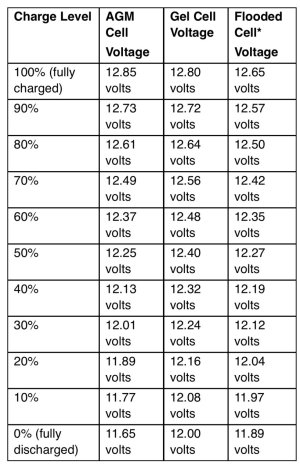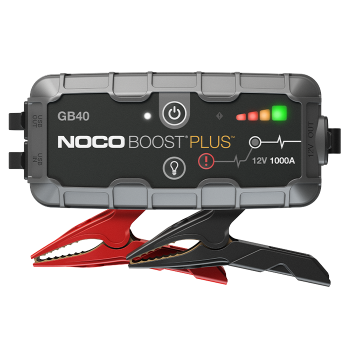One thing to mention is that battery voltage will drop under load, so measuring 12.3V with a load on the batts may not indicate a 50% discharge. Using open load voltage to determine state of charge is an approximation, but it gives a decent ballpark. Factors like temperature, battery construction and battery chemistry will all result in a variance in the voltage to battery percentage number.
Battery amp hour ratings are based on a certain discharge rate too, so a bigger consistent load will result in a lower effective battery capacity. The only way to know for sure what voltage correlates to remaining battery capacity is to apply a fixed load to the battery (say 1 amp) and take voltage readings at different time intervals. If you have a 100ah battery, theoretically you’d be at 50% after 50 hours in this scenario. Disconnect the load and take a voltage measurement to get your slightly more accurate 50% capacity voltage. Obviously nobody other than turbo nerds are going to do this, so people go off those charts and they are good enough to know when to bust out the charger. AGM batteries can handle more than 50% discharge better than standard lead acid batteries, but it will decrease their lifespan, just not as dramatically.
www.victronenergy.com



